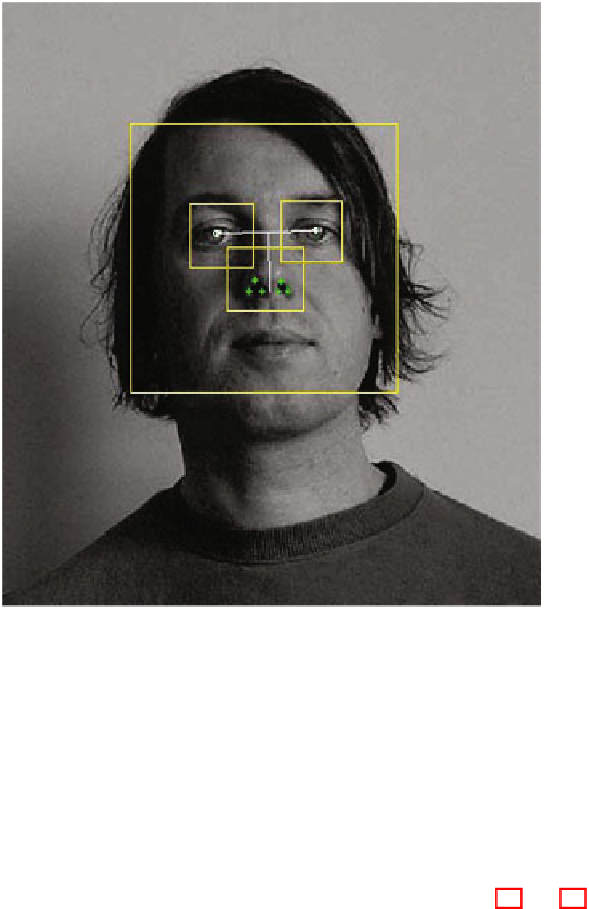Information Technology Reference
In-Depth Information
Fig. 14
Front Face Model, showing Baseline, nostril feature key points and centre reference
line
The algorithm that we used for ear-tip detection is as follows:
1. Detect within the region returned from the O
PEN
CV face detector.
2. If the skin patch representing this face is wider than the bounding box returned
by the Haar cascade, expand the detection region as required.
3. Use O
PEN
CV morphological operations to smooth the image and remove inter-
nal edges. This leaves the outside contour of the face as the only strong edge.
4. Perform Canny edge detection to get the face outline (see figures 16 and 17).
5. Detect corners by calculating gradients along the face edges
6. Choose the lowest sharp corner on either lateral side of the face. This should be
located where the ear lobe meets the face outline.
7.
return
ear tip points
Ear detection is much less reliable than detection of local features in the front-of-
face, as we cannot guarantee that the ear will not be occluded. Even if the ears are
clearly visible, our algorithm may fail if the jaw-line is within the region of interest,
as this will result in another sharp corner lower than the ear.

Search WWH ::

Custom Search